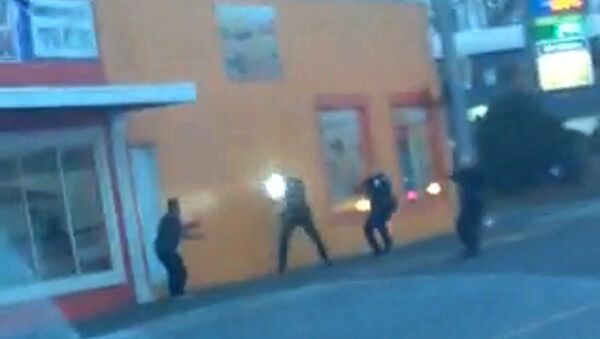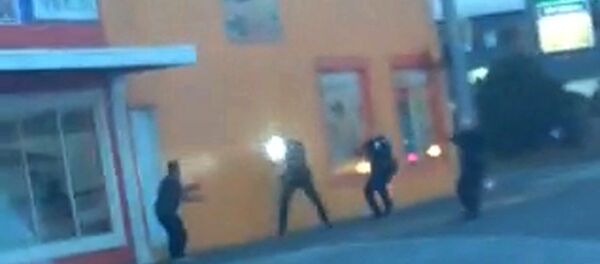Earlier this month, an unarmed 35-year-old, Antonio Zambrano-Montes, was shot and killed by three police officers at a busy intersection in Pasco, Washington. Zambrano-Montes was allegedly throwing rocks at traffic.
At a press conference on Thursday, Sgt. Ken Lattin, spokesman for the special investigative unit looking into the matter, called Zambrano-Montes’ behavior “not normal,” adding, “None of you would throw rocks at cars.”
Perhaps not, but most people’s first reaction would not be to fatally shoot a man who was.
The incident was caught on cellphone video by Dario Infante Zuniga, and clearly shows three police officers chasing Zambrano-Montes down the street as his arms are raised.
As the investigation of the incident continues, police refuse to say just how many shots were fired, and that information will most likely be withheld until coroner’s examination is completed in a few months. Still, Franklin County coroner Dan Blasdel told the Guardian that Zambrano-Montes died as a result of “multiple shots to the torso,” and several gunshots can plainly be heard in the video.
Zuniga’s video seems like fairly straightforward evidence against the three police officers involved. But Lattin claims that the video in question cannot be submitted as evidence.
“It’s not enough for us to take [it] from YouTube,” Lattin said. “It has to be preserved forensically in order to be admitted as evidence.” He then encouraged whoever shot the video to come forward.
But police knew who shot the video, since his name had been attached to the YouTube video for an entire week. On Thursday, police finally went to Zuniga’s home and, without a warrant, gave him an ultimatum: either hand over the phone, or go to the station so they could retrieve the file.
“They didn’t have a warrant,” Zuniga told the Free Thought Project, and said that police did not give him a chance to clear his personal files.
With the original file retrieved, Zuniga hopes his video can play a role in giving the family of Zambrano-Montes some sense of justice.
“I don’t think the officers did the right thing,” he told Free Thought Project. “I think they over used their power. There was a few different ways that they could have handled the situation.
He also encourages watchdogs to be vigilant with their cellphone cameras, as it may be one of the few ways to bring accountability for police violence.
“Everyone needs to start filming police so that when things like this happen, police don’t try to change things up,” he said.
Zambrano-Montes’ death was the fourth killing in less than a year by Pasco police. As Lattin’s investigation continues, he also told reporters that the FBI was monitoring his progress, and may step in if they feel that the special investigative unit is incapable of examining the Pasco police objectively.
— Paige Cornwell (@pgcornwell) February 19, 2015
Issues of police violence in America have been at the forefront ever since the August killing of unarmed teen, Michael Brown. Protests have occurred across the country in response to that incident, as well as others, including Eric Garner and 12-year-old Tamir Rice.
As the Atlantic pointed out last August, any American citizen has the right to photograph anything that occurs in public spaces, including police interactions. Some states do, however, have laws which limit video recordings, claiming that a video’s audio qualifies as eavesdropping.
— Kara Kostanich (@KaraKostanich) February 14, 2015
Media attorney Richard Goehler told Poynter his suggestions for would-be watchdogs:
“The…thing I would recommend would be whenever possible, make sure that your news gathering efforts are open, visible, and on public property. This will give you the best possible legal position or defense to any claim by a police officer for invasion of privacy (which truly is a meritless claim).”




